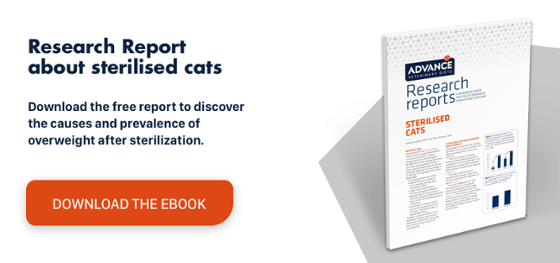Mange in cats: Therapeutic efficacy of different treatments
What is mange?
Mange is a disease caused by an ectoparasite, namely a mite that exclusively affects the skin. This skin disease occurs in many animal species, including humans, and has a worldwide distribution. With respect to the mites, there are a variety of species and different ones produce different types of skin disease (for more information on parasites affecting cats, see this post).
As far as breed-specific predilection is concerned, no breeds are more susceptible to mange than others and it is always spread through contact with another animal infested with the mites or with materials that have been in contact with an infested animal.
Mange in cats: Types
With regard to mange in cats, from the most to the least prevalent in cats, the various types of mange are as follows:
- Notoedric mange (mite: Notoedres cati). Notoedric mange is the most common and exclusive type of mange in cats. It starts at the head and then spreads to the rest of the body.
- Otodectic mange, also known as ear mange (mite: Otodectes cynotis). This type of mange in cats can also affect dogs, although very rarely. The mite mainly reproduces in the ear and is a major cause of feline otitis.
- Cheyletiellosis or walking dandruff (mite: Cheyletiella blakei). It is usually mistaken for dandruff, but the mites’ movement can be detected when observed closely.
- Demodectic mange (mite: Demodex cati). This subtype is more common in dogs (Demodex cati) but can also occur in cats (for more information on parasitic skin diseases in dogs see this article and or this one).
Treatment
There are different products with different forms of application available to prevent and treat mange in cats caused by various types of ectoparasites.
A blinded, controlled clinical study was conducted in 2014 to assess the therapeutic efficacy of a topical combination treatment (Broadline®, Merial) based on fipronil 8.3% wt/vol, (S)-methoprene 10% wt/vol, eprinomectin 0.4% wt/vol and praziquantel 8.3% wt/vol.1 Eighteen cats with Notoedres cati were selected and divided into two equal groups (study and control). Skin scrapings (three scrapings per animal each sampling) were taken prior to treatment and every two weeks for a total of 8 weeks to assess the treatment’s efficacy and the lesions were assessed to monitor clinical recovery. The study group had a response of over 99% (based on the number of live mites), with complete clinical recovery in all cases and no side effects.
There are also other types of therapeutic combinations that can be administered with pipettes, injectables, tablets, capsules and pastes as well as shampoos, aerosols, sprays, powders, ear drops, etc.
Related posts:
Skin disorders in dogs: Malassezia dermatitis
Canine pyoderma: predisposing factors and preventive treatment

